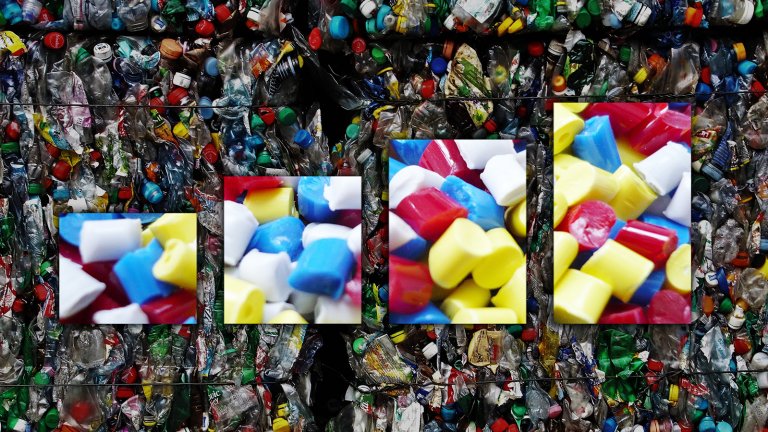
Plastics recycling in Germany in figures
In recent years, the utilisation and avoidance of plastic waste has become one of the topics that consumers are most concerned about. But in terms of the German economy, how much waste or what amount of raw materials are we actually talking about? How high is the consumption—i.e. the use and subsequent disposal—of waste? And what percentage of plastics is actually being recycled?
Classification and properties of different plastics
In recent years, the utilisation and avoidance of plastic waste rank among the topics that consumers are most concerned about.
Reports on microplastics in the seas and oceans, in drinking water and in our food have prompted many people to reconsider their approach to plastics and their disposal. Many companies are also discovering the potential that a more mindful use of this raw material holds. But in terms of the German economy, how much waste or what amount of raw materials are we actually talking about?
The demand for plastic products is growing
Answers to these questions can be found in a study commissioned jointly by five associations and companies from the plastics sector, namely BKV, Plastics Europe, the German Association for Plastics Packaging and Films (Industrievereinigung Kunststoffverpackungen, IK), the Mechanical Engineering Industry Association (Verband Deutscher Maschinen- und Anlagenbauer, VDMA) and the Federal Association for Secondary Raw Materials and Waste Disposal (Bundesverband Sekundärrohstoffe und Entsorgung, BVSE).
According to the study, production of plastics in Germany in 2015 reached approximately 18.5 million tons. An additional 9.3 million tons were imported. However, only 12.06 million tons were processed—the remaining amount was exported. The plastics were mainly turned into packaging (4,250 kilotons), into vehicles (1,260 kilotons), were used in the construction sector (2,740 kilotons) or for electronic components (725 kilotons).
The consumption—i.e. the use and subsequent disposal—of plastics has continued to rise in recent years among private as well as commercial users. In this regard it is important to note that plastic packaging, for example, must be disposed of or reutilised relatively quickly. Other plastic products, such as pipes in the construction sector, have a useful life of up to 80 years. Their disposal will therefore take place in the future… a long time after they have been produced. The consumption of these products in a given year is therefore much higher than the amount of waste they generate.
Reutilisation does not always mean recycling
According to the German Environment Agency (Umweltbundesamt, UBA) around 5.88 million tons of plastic waste were reutilised in 2015. In 1994 the figure amounted to 1.4 million tons.
A staggering 99% of the plastic waste in Germany generated through the consumption of plastic products and not through the manufacturing of another product is being reutilised. However, more than half (61%) of this waste ends up in power plants for thermal utilisation or energy generation. There it is incinerated in order to generate heat.
38% are being recycled. This corresponds to 1,850 kilotons. One part of this waste is being mechanically recycled, which means that it is being shredded and then reutilised, for example as granulate materials. The rest of it goes through raw material recycling: chemical processes are used to break down the waste material into its components, which are then used for new products. Mechanical recycling and raw material recycling are commonly known as “recycling”.
In comparison to 2013, the recycling rate in the field of plastics increased by 15% as the sector has become increasingly aware of the advantages of reutilising plastics and politicians are setting the course accordingly. Mainly plastics used for packaging are being recycled (79%), for example via the German dual recycling system or by recycling PET bottles.
Looking at these figures, it is clear there is still much to do, especially when it comes reutilising plastic waste via mechanical recycling or raw material recycling in order to turn it into new and durable and high-quality products.